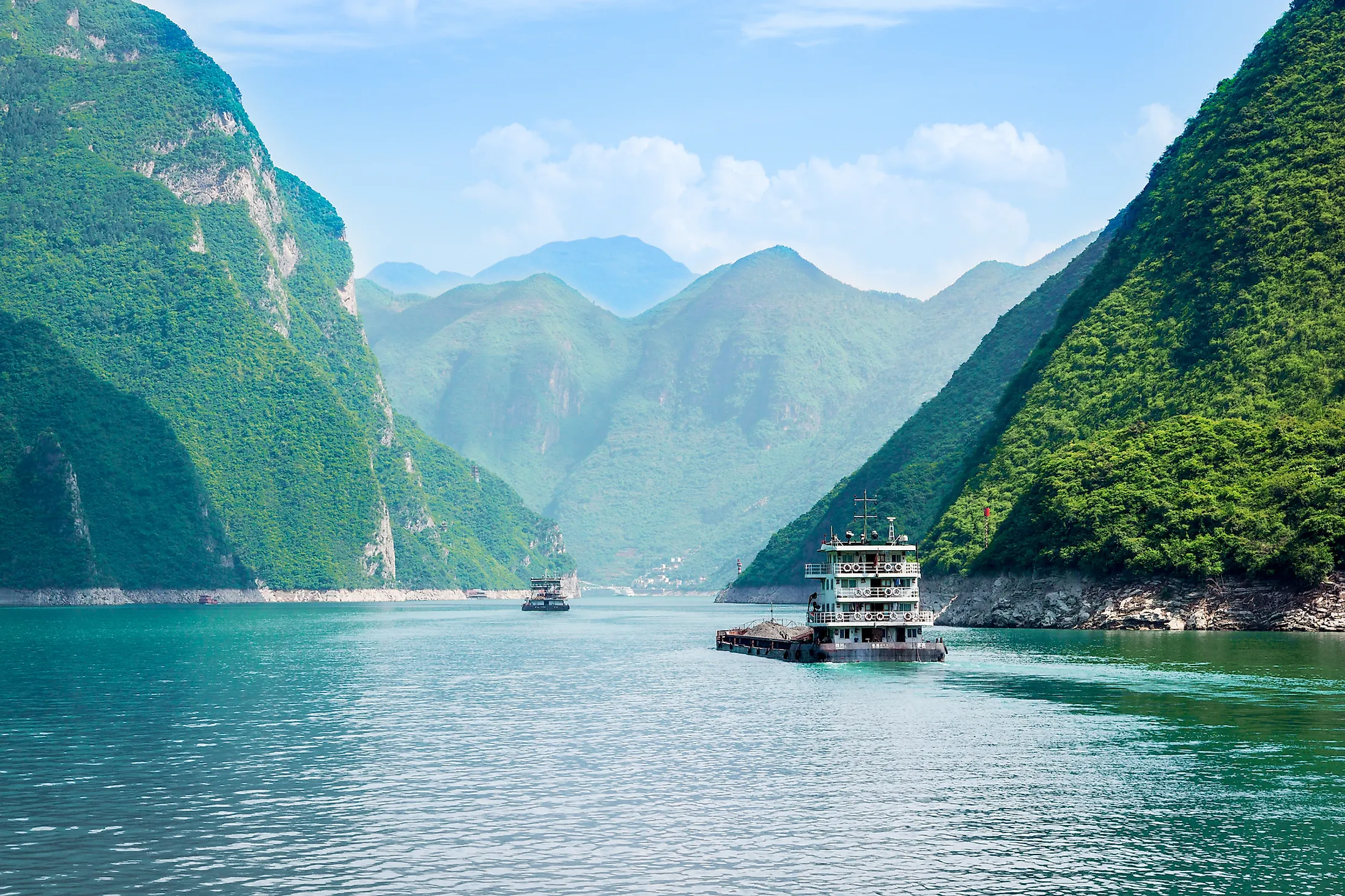
Yangtze River
The Yangtze River is the world’s third longest river after the Nile and Amazon Rivers. With a length of 6,300 km, the Yangtze River is the longest in Asia and the People’s Republic of China. It is also considered the longest river to exclusively flow within the borders of a single nation. The Yangtze River Basin extends for about 3,200km (west to east) and over 1,000km (north to south) and drains an area of about 1,808,500 sq. km, which accounts for about one-fifth of the land area of China. The Yangtze is considered the world’s 6th largest river by discharge having an average discharge volume of 30,166 m3/s. The Yangtze River Basin provides support to approximately one-third of the population of the People’s Republic of China.
Origin of Name
The lower 2,884km course of the river from the city of Yibin to its mouth at Shanghai is named “Chang Jiang” which means “Long River”. The 2,308km stretch of the river from Yibin to its confluence with Batang River is named “Jinsha Jiang” which means “Gold Sands River”. The 813km stretch of the river from Yushu to its confluence with Dangpu River is named as “Tongtian River”, while the official headstream of the river is named as “Tuotuo River”. During 1800, the English cartographers named the entire river “Yangtze” which means the “child of the ocean”.
Geography
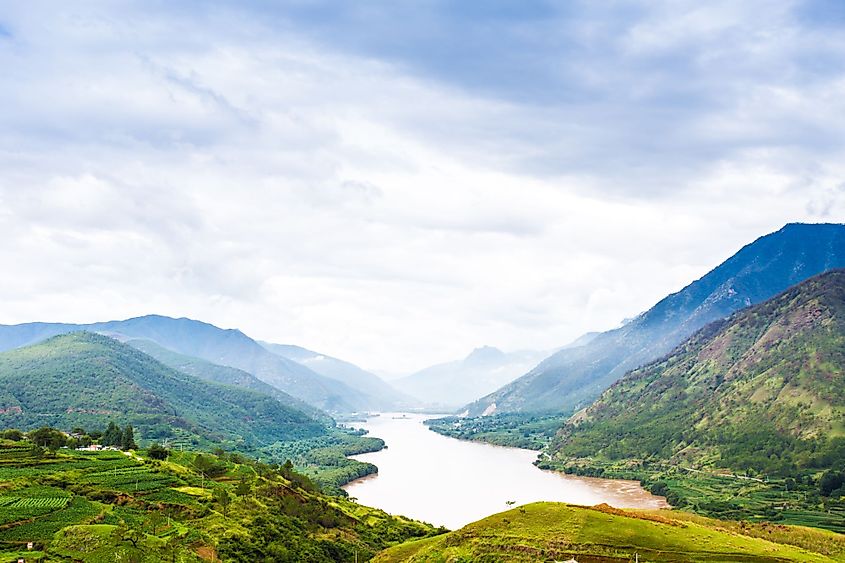
The Yangtze River originates from the Jari Hill, in the Tanggula Mountain range in the central portion of the Tibetan Plateau and stands at an elevation of 5,170m. The discovery of the source of the Yangtze River is quite recent, having only been discovered in the late 20th century. The Yangtze River flows through 11 Chinese provinces including Qinghai, Tibet, Sichuan, Yunnan, Chongqing, Hubei, Hunan, Jiangxi, Anhui, Jiangsu, and Shanghai. The entire course of the Yangtze River is divided into three parts: the Upper Course, the Middle Course, and the Lower Course.
In the Upper Course, the Yangtze flows across the Tibetan Plateau and descends through deep valleys in the mountains, located to the east of the plateau. The 2nd source of the Yangtze is the Ulan Moron River, which originates from the snowmelt waters on the slopes of the Tanggula Mountain in the southern part of the Province of Qinghai. From the joining of this stream along with several others, the Yangtze River then flows in the eastward direction through a large valley. On reaching the eastern parts of the Tibetan Highlands, the character of the river changes sharply. At this point, the river’s stretch is referred to as Jinsha, where it descends from a high elevation by winding its course to the south of the Bayan Har Mountains and forming a narrow valley. The Yangtze River continues to move in a southeasterly direction through very steep passes. In this region, the Yangtze River flows side by side with two other great rivers – the Mekong and the Salween Rivers.
In the Middle Course, the Yangtze River flows for about 1,010km between the Yibin city in the eastern part of the hilly Sichuan Province and the Yichang city in the western part of the Hubei Province. In this course, the elevation of the river drops from more than 5,000m to less than 1,000m. After entering the Sichuan Basin, the river flows through Mount Wushan thereby creating the spectacular Three Gorges region.
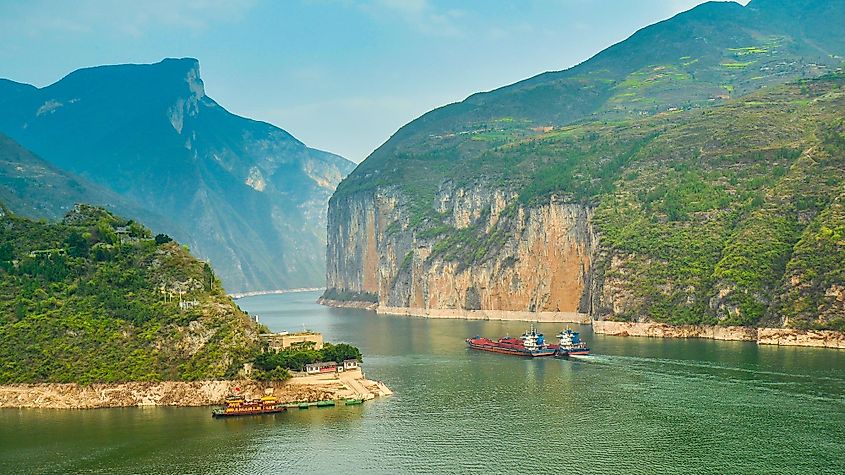
In the Lower Course, after exiting from the Three Gorges region, the Yangtze River then enters a network of lakes, marshes, and river channels that have developed on the extensive lowland plains. The largest of these lakes is Dongting Lake, which is situated on the boundary between the Hubei and Hunan Provinces. China’s biggest freshwater lake – Lake Poyang merges with the river at the northern edge of the Jiangxi Province. The Yangtze River then flows through the provinces of Anhui and Jiangsu, where it receives inflows from several small lakes and rivers. The Yangtze River finally drains into the East China Sea near the city of Shanghai.
Located at the heart of the Jiangnan region, the Yangtze River Delta covers an area of about 100,000 sq. km. The fertile delta region supports more than 115 million people and helps in the cultivation of cotton, grains, tea, hemp, etc. It is estimated that the Yangtze River Delta region generates more than 20% of the GDP of the People’s Republic of China.
Tributaries of the Yangtze River

Throughout its course, the Yangtze River is fed by more than 700 tributaries. Of all these tributaries, there are 8 tributaries, which are considered the largest of all the tributaries of the Yangzte River. These 8 tributaries are further divided into the left and right tributaries. The left tributaries of the Yangtze River include the Yalong River, Min River, Jialing River, and the Han River. The right tributaries of the Yangtze River include Wu River, Yuan River, Xiang River, and the Gan River.
Characteristics of the Yangtze River
The areas that are situated to the north of the river face a dry climate with lower temperatures and less rainfall. The areas that are situated to the south of the river experiences a warm and humid climate with adequate rainfall. The average annual rainfall in the Yangtze River Basin is about 1,100mm. In the middle and lower courses of the river, most of the precipitation falls as rain, while in the higher upper reaches, the precipitation falls as snow.
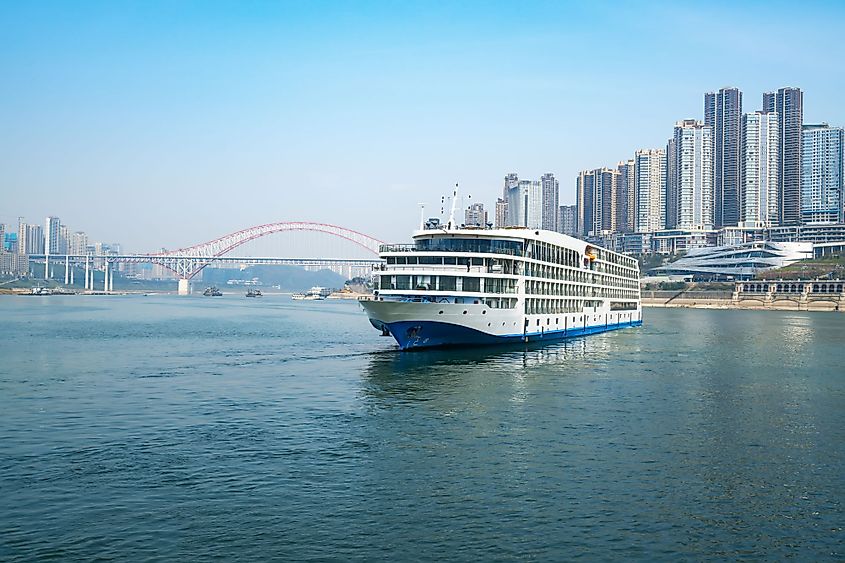
The Yangtze River floods every year during the summer months, but the waters of the rivers are kept in check by the numerous dykes, that have been constructed to contain the waters of the river. The river is so wide that the ocean-going vessels can travel up to 1,600km inland without any navigation obstacles. The entire river is flanked by several important industrial units, which play an important role in the economic growth of the river valley. The Yangtze River functions as one of the major navigable rivers of China and also one of the busiest waterways in the world.
Ecology
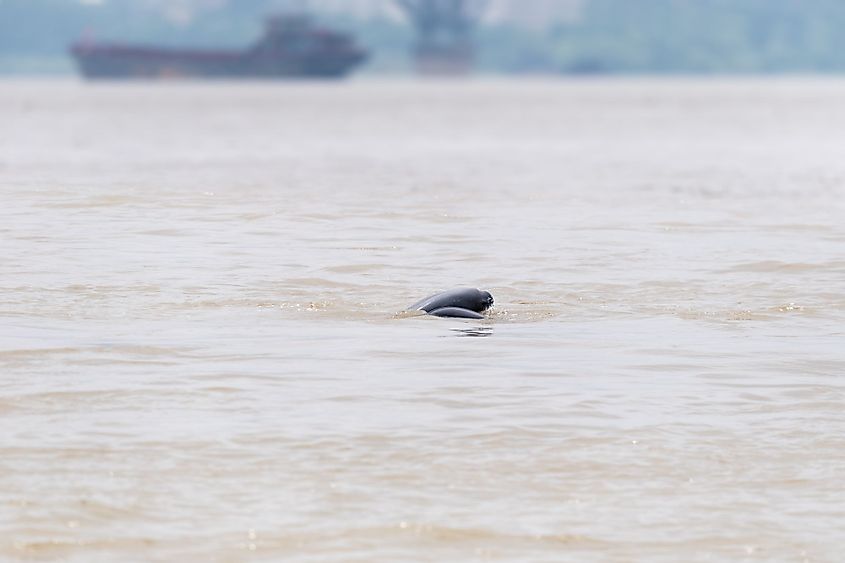
The Yangtze River is considered to be one of Asia’s as well as China’s most species-rich rivers. More than 416 species of fish have been recorded from the Yangtze River Basin, of which 362 species are exclusively freshwater species. About 178 fish species are endemic to the Yangtze River basin. Besides fishes, the Yangtze River is also home to the Yangtze River dolphin, the narrow-ridged finless porpoise, Chinese alligator, Chinese giant salamander, Yangtze giant softshell turtle, etc. Numerous freshwater crabs including the Chinese mitten crab have been recorded in the Yangtze River basin.
Brief History
The Yangtze River plays an important role in the cultural origins of southern China and Japan. Human activities were first started in the Three Gorges area about 27,000 years ago. During the 5th millennium BC, the Yangtze River served as a major population center of the Majiabang and Hemudu cultures. The middle Yangtze valley served as home to the people belonging to the Neolithic cultures. The lower Yangtze region was occupied by the Gouwu and Jiangsu tribes. The Yangtze served as the site of naval battles during the Jin-Song wars. The naval Battle of Tangdao also took place in the Yangtze River. For several years, the Yangtze River functioned as the backbone of the inland water transport system of China.











